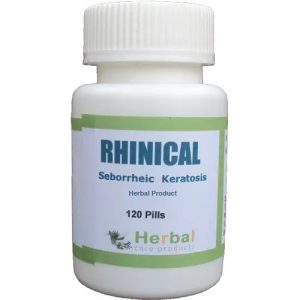No products in the cart.
Return To Shop 0 Cart $0.00 0
No products in the cart.
Return To Shop Shopping cart (0)
Subtotal: $0.00
Free shipping over 299$
Seborrheic Keratosis: The Easiest Way to Remove at Home
Do you have Seborrheic Keratosis, but don’t want to take a trip to the dermatologist to have it removed? If so, then this blog post is for you! We’ll discuss the easiest and safest way to remove seborrheic keratosis at home. Seborrheic keratosis can be an embarrassing skin condition that many people want to get rid of, but don’t want to go through the hassle of a trip to the dermatologist.

What is Seborrheic Keratosis?
Seborrheic keratosis (SK) is a skin condition that causes noncancerous skin growths. These growths, which can appear on almost any part of the body, typically look like warts, moles, or dark spots. They range in size from small, flat spots to raised lesions that are an inch or more in diameter. SK is most commonly seen on the face, chest, and back.
SK is not contagious and doesn’t require treatment unless it’s causing symptoms such as itching or discomfort. However, many people choose to have them removed for cosmetic reasons. It is estimated that up to 83 percent of adults over the age of 60 have at least one SK.
The exact cause of SK is unknown, but it is believed to be related to genetics and aging. It may also be related to exposure to ultraviolet (UV) light from the sun, as well as environmental factors such as hormonal changes.
Related Articles: Does red light therapy help Seborrheic Keratosis?
What Causes Seborrheic Keratosis?
The exact cause of seborrheic keratosis is unknown, but certain factors may increase a person’s risk for developing the condition. These risk factors include age, genetics, and exposure to certain chemicals or radiation.
Age: The risk of seborrheic keratosis increases with age, with most people developing them after the age of 40.
Genetics: It is believed that seborrheic keratosis can be passed down from parent to child. It is estimated that as many as 1 in 3 individuals with a family history of seborrheic keratosis will develop the condition at some point in their lives.
Chemicals and Radiation: Exposure to certain chemicals and radiation can increase the risk of seborrheic keratosis. This includes exposure to petroleum products, coal tar, arsenic, x-rays, and chemical sunscreens.

How to Remove Seborrheic Keratosis at Home
Removing seborrheic keratosis at home can be a safe and effective way to treat this skin condition. There are several ways that you can remove seborrheic keratosis at home, but before you attempt any of them, it is important to talk to your doctor or dermatologist. Here are some of the most common methods for removing seborrheic keratosis at home.
- Freezing: One of the most popular ways to remove seborrheic keratosis at home is with cryotherapy. This method uses liquid nitrogen or another cooling agent to freeze the seborrheic keratosis and cause it to fall off in about a week. The surrounding skin may be red or sore afterwards.
- Burning: Another method for removing seborrheic keratosis at home is by burning off the growth with an electric needle. This method is quick and painless, but requires some medical experience to do properly.
- Scraping: Scraping off the growth with a sharp instrument is another option for removing seborrheic keratosis at home. This can be done carefully with a scalpel, but should only be done by someone with experience.
- Creams: There are creams available over-the-counter that can be used to help remove seborrheic keratosis at home. These creams usually contain salicylic acid or lactic acid and work by gradually wearing away the growths.
Regardless of which method you choose, it is important to take proper care of your skin afterwards. Make sure to keep the area clean and moisturized and avoid picking or scratching at the affected area.
If you have any concerns about the safety or effectiveness of removing seborrheic keratosis at home, it is best to consult with a doctor or dermatologist before attempting any of these methods.
When to See a Doctor
If you have any doubts about your seborrheic keratosis, it is best to consult a doctor. Some cases may require the help of a medical professional for a proper diagnosis and treatment plan. You should visit a doctor if:
- You have a lesion that is growing or changing shape rapidly
- Your lesion appears to be infected
- Your seborrheic keratosis is causing discomfort, itching, or pain
- Your lesion has developed in an area where you would normally not expect to find one
- You want to be sure that your seborrheic keratosis is benign and not something more serious
- You want to explore medical treatment options
When visiting the doctor, they may suggest a biopsy of the lesion to properly diagnose and rule out any potential skin cancers. A biopsy will typically involve taking a small sample of tissue from the affected area. This sample can then be examined under a microscope to determine if any cancerous cells are present.
It is important to take seborrheic keratosis seriously and seek medical advice if you have any doubts or concerns. By consulting a doctor, you can be sure that your lesion is benign and can explore any treatment options available.
More
More

